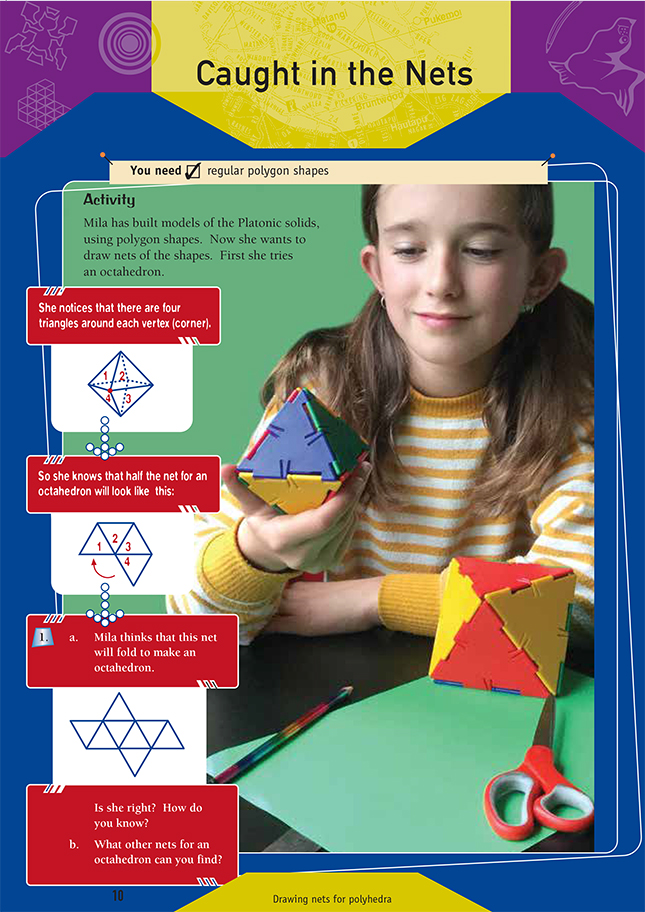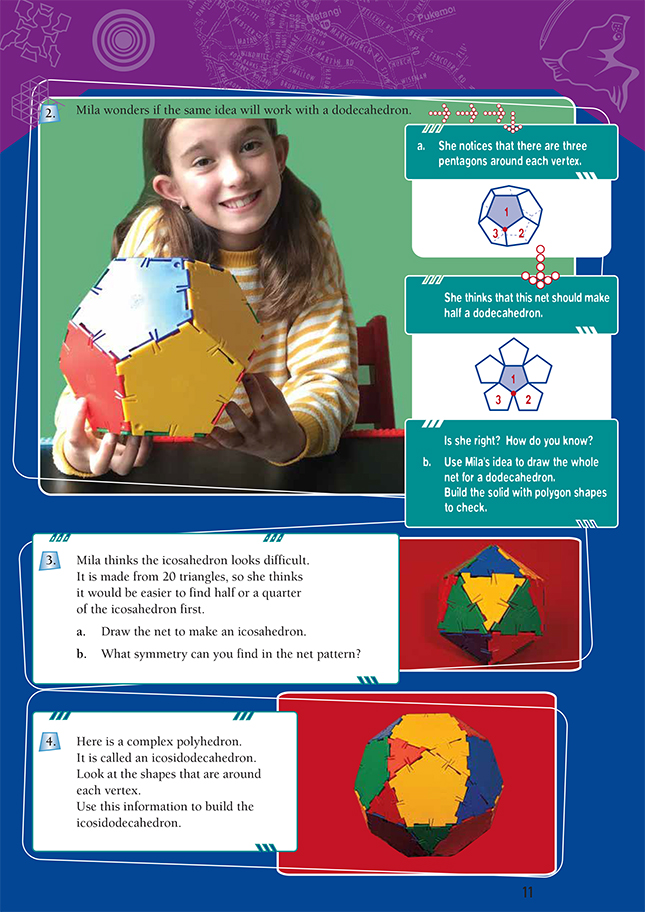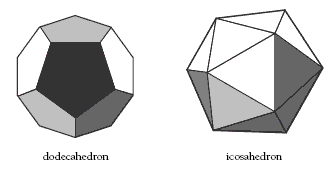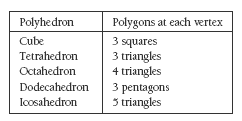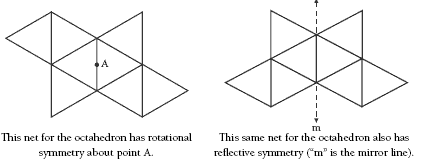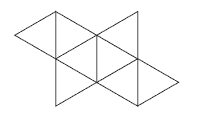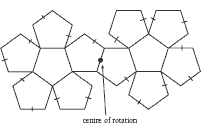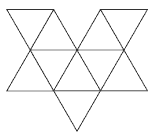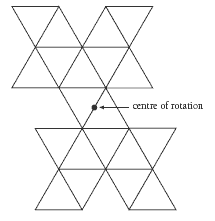This is a level 3 geometry strand activity from the Figure it Out series.
A PDF of the student activity is included.
Click on the image to enlarge it. Click again to close. Download PDF (300 KB)
draw nets for polyhedral
FIO, Level 3-4, Geometry, Caught in the Nets, page 10
regular polygon shapes
Before they construct the polyhedra in this activity, the students should have completed activities from Geometry, Figure It Out, Level 3, such as those on pages 5 and 11.
The polyhedra in questions 1, 2, and 3 are all Platonic solids. The Platonic solids are the regular polyhedra and derive their name from the Greek philosopher Plato (428–347 BC). They are called regular polyhedra because each one is made of just one type of regular polygon. The Platonic solids are the cube, the tetrahedron, the octahedron, the dodecahedron, and the icosahedron.
The five Platonic solids:
If possible, have models of the Platonic solids, made from regular polygon shapes, available for the students to examine. They can also make up the polyhedra themselves from the polygon shapes.
When the students are drawing nets, they should focus on one vertex to see what and how many shapes are around it. They then need to make sure that each vertex in their net has the same configuration of shapes around it.
Encourage students to look for symmetries in the nets they have drawn. They should be able to identify rotational and reflective symmetries in the nets.
Students at this level should not be asked to design nets for more complex polyhedra, such as the one shown in question 4. The icosidodecahedron has 32 sides and is one of the 13 Archimedean solids.
They are made only from regular polygons but are called semi-regular polyhedra because they are made from more than one type of polygon.
As an extension, there is a relationship involving polyhedra that students can explore. Euler’s (1707– 1783) Theorem says that for any polyhedron, the number of faces (F), vertices (V), and edges (E) satisfies the equation F + V = E + 2 (see Answers and Teachers’ Notes: Geometry, Figure It Out, Level 3,
page 20).
Answers to Activity
1. a. Yes, because there are four triangles at each
vertex.
b. Two examples of octahedron nets are:
2. a. Yes, because the net has six faces or one half of the dodecahedron and there are three pentagons at each vertex.
b. Practical activity.
The whole net for the dodecahedron is:
3. a. One way of drawing a half-net for the icosahedron is:
You can expand this to a full net:
Another net for the icosahedron is:
.gif)
b. Rotational symmetry
4. Practical activity
